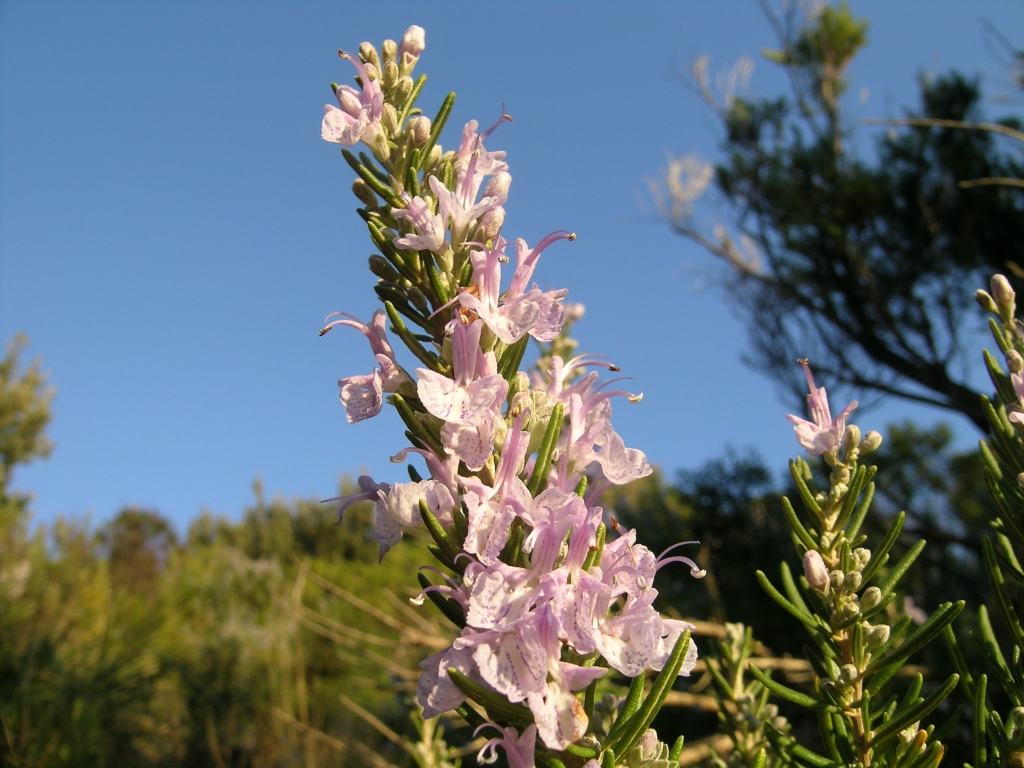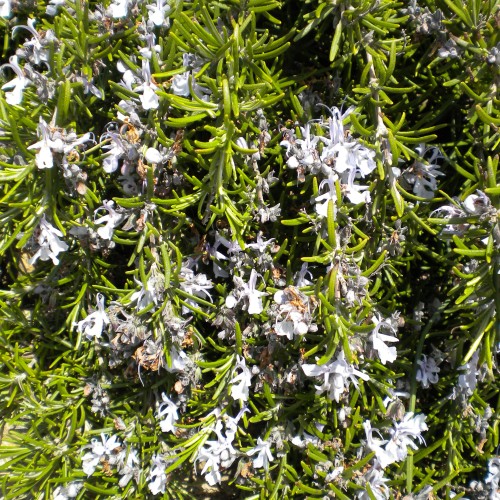
Rosmarinus officinalis is a shrub species that grows wild in coastal environments and the immediate hinterland. This plant transforms the island's slope between late winter and early spring with striking expanses of flowers in shades ranging from pale blue to violet, scenting the air with their distinctive aroma.
Its name derives from the Latin noun Ros-roris (dew) and the adjective marinus (of the sea), creating the image of sea dew in an attempt to describe its delicate blossoms. This small, evergreen shrub grows from a few tens of centimetres to a metre and a half in height. its form can be low and trailing, when growing in the rocks, particularly in coastal areas exposed to the winds, or more upright, in more sheltered inland areas. It has woody, many-branched stems with grey or light brown bark and dense, highly aromatic foliage, bright green in colour, consisting of numerous small, narrow, linear leaves 15-30 mm long whose edges fold downwards, revealing a glimpse of a white line, covered with fine down, on the underside.
The flowers, arranged in pairs on the leaf axils at the tips of the branches, have a bilabiate calyx generally coloured light blue, lilac pink or white. It can be seen growing in the cracks between the rocks as well as on coastal dunes, in scrublands and in maquis further inland, remaining low and stooped in rockier and windier locations and growing a little taller in the case of some cultivars or when in competition with other subshubs. The structure of its leathery, ericoid leaves is a typical adaptation to the hot, dry climate of these Mediterranean coasts, rosemary's habitat.
It blossoms from spring to summer although, in ideal settings, like Elba's southern, and sheltered locations, it begins as early as autumn, continuing through the winter and peaking in March.



